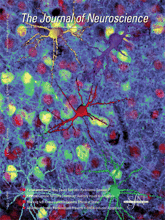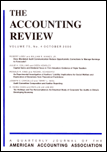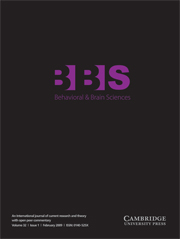The Chinese room argument holds that a digital computer executing a program cannot have a "mind", "understanding", or "consciousness", regardless of how intelligently or human-like the program may make the computer behave. The argument was presented by philosopher John Searle in his paper "Minds, Brains, and Programs", published in Behavioral and Brain Sciences in 1980. Similar arguments were presented by Gottfried Leibniz (1714), Anatoly Dneprov (1961), Lawrence Davis (1974) and Ned Block (1978). Searle's version has been widely discussed in the years since. The centerpiece of Searle's argument is a thought experiment known as the Chinese room.

Stevan Robert Harnad is a Canadian cognitive scientist based in Montreal.

Self-archiving is the act of depositing a free copy of an electronic document online in order to provide open access to it. The term usually refers to the self-archiving of peer-reviewed research journal and conference articles, as well as theses and book chapters, deposited in the author's own institutional repository or open archive for the purpose of maximizing its accessibility, usage and citation impact. The term green open access has become common in recent years, distinguishing this approach from gold open access, where the journal itself makes the articles publicly available without charge to the reader.
Psycoloquy was a refereed interdisciplinary open access journal that was published from 1990 to 2002 and was sponsored by the American Psychological Association (APA) and indexed by APA's PsycINFO and the Institute for Scientific Information. The editor-in-chief was Stevan Harnad. A 1995 book on electronic publishing resulted from a listserv discussion about an article published in Psycoloquy.

Evolution and Human Behavior is a bimonthly peer-reviewed academic journal covering research in which evolutionary perspectives are brought to bear on the study of human behavior, ranging from evolutionary psychology to evolutionary anthropology and cultural evolution. It is primarily a scientific journal, but articles from scholars in the humanities are also published. Papers reporting on theoretical and empirical work on other species may be included if their relevance to the human animal is apparent. The journal was established in 1980, and beginning with Volume 18 in 1997 has been published by Elsevier on behalf of the Human Behavior and Evolution Society. The editor-in-chief is Debra Lieberman.
The "Subversive Proposal" was an Internet posting by Stevan Harnad on June 27, 1994 calling on all authors of "esoteric" research writings to archive their articles for free for everyone online. It initiated a series of online exchanges, many of which were collected and published as a book in 1995: Scholarly Journals at the Crossroads: A Subversive Proposal for Electronic Publishing. This led to the creation in 1997 of Cogprints, an open access archive for self-archived articles in the cognitive sciences and in 1998 to the creation of the American Scientist Open Access Forum. The Subversive Proposal also led to the development of the GNU EPrints software used for creating OAI-compliant open access institutional repositories, and inspired CiteSeer, a tool to locate and index the resulting eprints.

Hindawi is a publisher of peer-reviewed, open access, scientific journals currently active in scientific, technical, and medical (STM) literature. It was founded in 1997 in Cairo, Egypt, and purchased in 2021 for $298 million by John Wiley & Sons, a large US-based publishing company. The publisher has been classified as a predatory publisher. After almost 10,000 article retractions in 2023, Wiley announced that it would cease using the Hindawi brand.
The Journal of the Royal Society of Medicine is a peer-reviewed medical journal. It is the flagship journal of the Royal Society of Medicine with full editorial independence. Its continuous publication history dates back to 1809. Since July 2005 the editor-in-chief is Kamran Abbasi, who succeeded Robin Fox who was editor for almost 10 years.

The American Journal of Bioethics is a monthly peer-reviewed academic journal published by Taylor & Francis, covering all aspects of bioethics. It publishes target articles, open peer commentaries, editorials, book reviews, and case studies and commentaries in clinical care and research ethics. The journal also publishes special issues that address timely ethical challenges. The editor-in-chief is David Magnus, who was also one of the journals founders.

The Journal of Neuroscience is a weekly peer-reviewed scientific journal published by the Society for Neuroscience. It covers empirical research on all aspects of neuroscience. Its editor-in-chief is Marina Picciotto. According to the Journal Citation Reports, the journal has a 2021 impact factor of 6.709.
Genes, Brain and Behavior is a peer-reviewed scientific journal covering research in the fields of behavioral, neural, and psychiatric genetics. It is published by Wiley-Blackwell on behalf of the International Behavioural and Neural Genetics Society. The journal was established in 2002 as a quarterly and is currently published monthly. G2B is a hybrid open access journal, but two years after publication all content is available for free online.

The Annual Review of Psychology is a peer-reviewed academic journal that publishes review articles about psychology. First published in 1950, its longest-serving editors have been Mark Rosenzweig (1969–1994) and Susan Fiske (2000–present). As of 2023, Annual Review of Psychology is being published as open access, under the Subscribe to Open model. As of 2023, Journal Citation Reports gives the journal a 2022 impact factor of 24.8, ranking it first of 81 journal titles in the category "Psychology (Science)" and second of 147 titles in the category "Psychology, Multidisciplinary ".

The Accounting Review is a bimonthly peer-reviewed academic journal published by the American Accounting Association (AAA) that covers accounting with a scope encompassing any accounting-related subject and any research methodology. The Accounting Review is one of the oldest accounting journals, and recent studies considered it to be one of the leading academic journals in accounting.
Behavioral and Brain Functions is a peer-reviewed open access scientific journal published by BioMed Central. It publishes articles on "all aspects of neurobiology where the unifying theme is behavior or behavioral dysfunction". It was established in 2005 with Terje Sagvolden as founding editor-in-chief, who was succeeded by Vivienne A. Russell. The current editor-in-chief is Wim Crusio.
Scholarly peer review or academic peer review is the process of having a draft version of a researcher's methods and findings reviewed by experts in the same field. Peer review is widely used for helping the academic publisher decide whether the work should be accepted, considered acceptable with revisions, or rejected for official publication in an academic journal, a monograph or in the proceedings of an academic conference. If the identities of authors are not revealed to each other, the procedure is called dual-anonymous peer review.

Wiley Interdisciplinary Reviews: Cognitive Science is a bimonthly peer-reviewed scientific journal covering cognitive science. The journal was established in 2010 and is published by John Wiley & Sons as a member of its Wiley Interdisciplinary Reviews series. Submissions are by invitation only and focus on research areas at the interfaces of the traditional disciplines. Coverage aims to provide an encyclopedic coverage of the field. The journal does not publish original research papers, but "Editorial Commentaries", "Opinions", "Overviews", "Advanced Reviews", and "Focus Articles".

Behavioral Ecology is a bimonthly peer-reviewed scientific journal published by Oxford University Press on behalf of the International Society for Behavioral Ecology. The journal was established in 1990.

Cognitive, Affective, & Behavioral Neuroscience is peer-reviewed scientific journal covering research on behavior and brain processes in humans. It was established in 1973 as Psychobiology and received its current title in 2001, with volume numbering restarting at 1. The journal is published by Springer Science+Business Media on behalf of the Psychonomic Society and the editor-in-chief is Diego A. Pizzagalli.
The Journal of Biosocial Science is a bimonthly peer-reviewed scientific journal covering the intersection of biology and sociology. It was the continuation of The Eugenics Review, published by the Galton Institute from 1909 till 1968. It obtained its current name in 1969, with volume numbering re-starting at 1, and switched publishers to Cambridge University Press. The editor-in-chief is Dr Alejandra Núñez-de la Mora.

Animal Sentience: An Interdisciplinary Journal on Animal Feeling is a peer-reviewed academic journal. Its subject matter, animal sentience, concerns what and how nonhuman animals think and feel as well as the scientific and scholarly methods of investigating it and conveying the findings to the general public. The initial publisher was the Animal Studies Repository of the Institute for Science and Policy of The Humane Society of the United States, now the Animal Studies Repository of WellBeing International. The editor-in-chief is Stevan Harnad.












